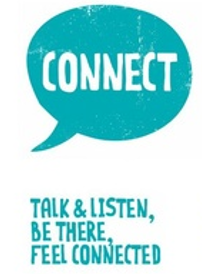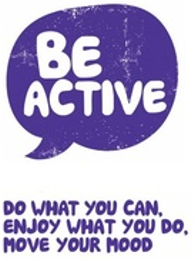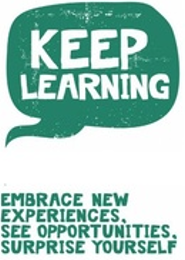Staff Mental Health Awareness Week
In celebration of National Mental Health Awareness Week (MHAW) last week staff and students participated in a variety of activities to raise awareness of mental health and wellbeing, many being fun but also very thoughtful and reflective. This work has been led by Ms Stacey, our Head of Sixth Form and SENDco and our Student Well Being Ambassadors.
For the staff Ms Stacey followed the guidelines of the NHS’s 5 ways to Wellbeing which has included a daily focus on one of the following:
Connect – talk and connect, be there feel connected
Give – your time, your words, your presence
Keep learning – embrace new experiences, see opportunities, surprise yourself
Take notice – remember the simple things that give you joy
Be active - do what you can do. Move your mood
Staff activities included daily challenges, breaktime treats in the staff room, notes of appreciation, a walk for wellbeing, positive message t-shirt decorating, colouring, mindful eating, and a daily wardrobe colour theme to increase a feeling of connectivity. The week ended with the creation a 'Wall of Wellbeing' in the staff room with individuals making pledges to take steps to make positive changes to improve their own wellbeing.
Please see the video below for more information about this Staff Wellbeing Week:
The momentum will continue as we review the highlights of the week and what small steps we can make to improve wellbeing at work and home alike.
Please find more information on each of these 5 ways to Wellbeing including some useful links below.
Connect

Summary:
“Connect with the people around you. With family, friends, colleagues and neighbours. At home, work, school or in your local community.
Think of these as the cornerstones of your life and invest time in developing them. Building these connections will support and enrich you every day”
Further Insight:
What is Connection?
Human beings are hard-wired to seek out connection and as we were evolving it would have been essential to our survival.
Being too different or separated from the tribe would have spelled danger and a threat to survival.
The emotion of loneliness is designed to trigger us into taking action to get more connection in our lives.
There are different types of connection to consider:
1) Primary social network
This is your core group of family and friends
2) Broader social network
Feeling like you are a part of groups, clubs, the community and yes, your organisation is an important aspect of your social connection needs.
These more ‘superficial’ relationships are important for feelings of connectedness, familiarity and sense of self-worth associated with an individual’s position in a community.
3) Connection with self
Being comfortable in your own company, reflecting on what’s important to you, and a sense of purpose in your life is a part of connection that is often overlooked
Why is connection important?
1) Social relationships are critical for promoting wellbeing and acting as a buffer against mental ill health
2) People with a primary social network (close relatives or friends) of 3 or less have a higher probability of common mental health disorders
3) After leisure activities, spending time with partner, children, friends and family was the most-cited reason for wanting to work less
4) Social networks promote a sense of belonging and wellbeing
5) Happy people have stronger social relationships than less-happy people
Useful links:
Be Active

Summary:
“Go for a walk or run. Step outside. Cycle. Play a game. Garden. Dance. Exercising makes you feel good.
Most importantly, discover a physical activity you enjoy; one that suits your level of mobility and fitness.”
Further Insight:
Take action against inactivity!
Whilst we all probably know the importance of remaining active for both our physical and psychological health, finding the time to actually do something about it can be one of the biggest challenges we face. So remember some of the message from the links I have sent throughout the week – put boundaries around your work schedule, manage your time to allow you the space to do other things and find an activity that works for you. Your physical health will improve along with your psychological health – it’s a win-win situation!
What is Activity?
It might sound obvious, but recommendation for activity in the context of mental wellbeing is subtle different to physical fitness.
Intensity
Public guidelines for exercise requirements are 30 minutes five times a week are regarded as required to significantly reduce symptoms of depression
Even single bouts of exercise of as little as 10 minutes can still have a positive effect on mood
Higher intensity and longer duration exercise is still recommended for most people.
However, many people struggle to find the motivation or time to meet these requirements and so fail to even get started.
Aim for progress, not perfection.
Type
The evidence suggests that the type of activity is unimportant. Anything that gets you moving and that you enjoy will be good.
Why is activity important?
1) Regular physical activity is associated with a greater sense of wellbeing, lower rates of depression and anxiety
2) Exercise offers a number of physical responses, such as the release of endorphins that can reduce the perception of pain
3) There are also a number of potential psychological benefits to activity, such as perceived self-efficacy, a sense of mastery and a perceived ability to cope.
It also detracts from negative thoughts
4) Even small changes in level of activity can enhance wellbeing
Useful links:
Take Notice
 Summary:
Summary:
“Be curious. Catch sight of the beautiful. Remark on the unusual. Notice the changing seasons. Savour the moment, whether you are on a train, eating lunch or talking to friends.
Be aware of the world around you and what you are feeling. Reflecting on your experiences will help you appreciate what matters to you.”
Further Insight:
How often do you stop to really take notice?
We all have busy lives and sometimes it’s tricky to pause that treadmill. You definitely do not need to be an expert at ‘mindfulness’ to appreciate the opportunity to just stop every now and again. Consider the small things that bring you joy, consciously notice them and consciously enjoy them – easy as that!
There are two sides to mindfulness / taking notice: the practice and the pause.
The Practice
Setting time aside to strengthen the ‘mindfulness muscle’ through deliberate, progressive practice.
This can be done in the form of a meditation, paying attention to our breathing, scanning the body or focusing on an object or process (such as eating)
The Pause
The awareness we have of our moment to moment thoughts, and our ability to pause between thought and response.
This ability to pause can help us make decisions that are influenced less by emotion and more by logic and the ‘human’ brain.
Taking ownership
Lasting behavioural change can only be achieved if the proposed interventions are somewhat internalised and owned by the individual – the only person you can change is yourself
Increasing self-awareness by ‘taking notice’ may have the added benefit of enhancing the process of individuals deciding for themselves to make positive changes to their habits.
Why is taking notice important?
1) Being trained to become more aware of sensations, thoughts, and feelings for 8-12 weeks can enhance wellbeing for several years
2) Being in a state of mindfulness has been shown to predict positive mental states
3) Open awareness is particularly valuable for choosing behaviours that are consistent with one’s needs, values and interests
4) This self-regulatory behaviour is thought to be important for wellbeing
5) Reminding oneself to ‘take notice’ is a step in the right direction towards strengthening and broadening self-awareness
6) Studies have shown that being aware of what is taking place in the present directly enhances well-being
7) Savouring an experience can help to reinstate life priorities.
8) Heightened awareness enhances an individual’s self-understanding and allows an individual to make choices in alignment with his/her own values and intrinsic motivations
Useful links:
Keep Learning
 Summary:
Summary:
“Try something new. Rediscover an old interest. Sign up for that course. Take on a different responsibility at work. Fix a bike. Learn to play an instrument or how to cook your favourite food.
Set a challenge you will enjoy achieving. Learning new things will make you more confident, as well as being fun to do.”
Further Insight:
Learning the importance of learning
Learning is what we do. Right? As a school, whether it is directly or indirectly, our working life is centred around learning. But now, this is personal. If we can value our own learning as much as we do the learning of the students, we can’t go wrong.
What does ‘keep learning’ mean?
Within our roles in the workplace there is usually an element of continual professional development built in.
However, to really tap into the wellbeing benefits of learning, it should be something outside of the context of work.
The NEF report states: ’Given that extrinsic incentives and pressures can reduce motivation to perform even inherently interesting activities, it is important that the messages around this action appeal to both formal and informal learning, which do not necessarily have instrumental ends (e.g. career progression or attainment of a course certificate).”
Why is it important to keep learning?
1) The continuation of learning through life has the benefits of enhancing an individual’s self-esteem, encouraging social interaction and a more active life
2) Adult learning has been correlated with positive effects on wellbeing, reports of life satisfaction, optimism and efficacy
3) Participation in lifelong learning serves to positively impact on an individual’s wellbeing and resilience
4) The practice of setting goals has been strongly associated with higher levels of wellbeing
5) Promotion of wellbeing is associated with goal-directed behaviour when the goals are self-generated, and congruent with personal values
Useful links:
Give

Summary:
“Giving can be your time or expertise to help individuals or groups, or even simply giving somebody a compliment or your full attention.
There is a difference between giving through a sense of obligation or duty, and giving freely from the heart.”
Further Insight:
Time to give your time back to yourself?
As teachers and school staff we are naturally altruistic, giving our time freely to help others (especially in the lead up to and during the examination season). This is a wonderful quality and can be very rewarding, but consider the balance of how much of your time you are giving to yourself and how much you are giving to others. We have choices about how we balance our time – do you have the balance right?
Why is it important to give?
1) Mutual cooperation has been shown to light up the reward areas of the brain
2) ‘The Foresight definition of mental wellbeing says that it is enhanced when an individual is able to achieve a sense of purpose in society and, thus, contribute to their community
3) Helping, sharing, giving and team-oriented behaviours are likely to be associated with an increased sense of self-worth and positive feelings
4) Feelings of happiness and life satisfaction have been strongly associated with active participation in social and community life
5) Research into actions for promoting happiness has shown that committing an act of kindness once a week over a six-week period is associated with an increase in well-being, compared to control group
6) Giving freely from the heart rather through a sense of obligation or duty can contribute to a sense of wellbeing.
7) For the full impact of giving to be realised is just as important to graciously receive compliments and offers of help.
Useful links:
